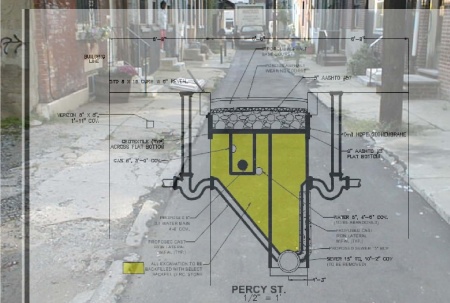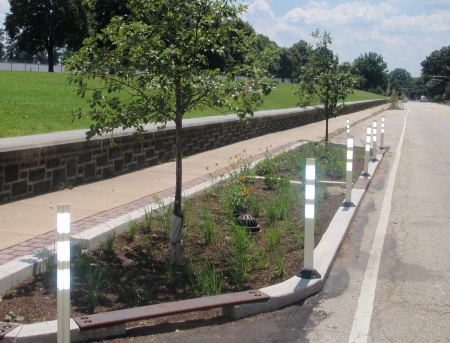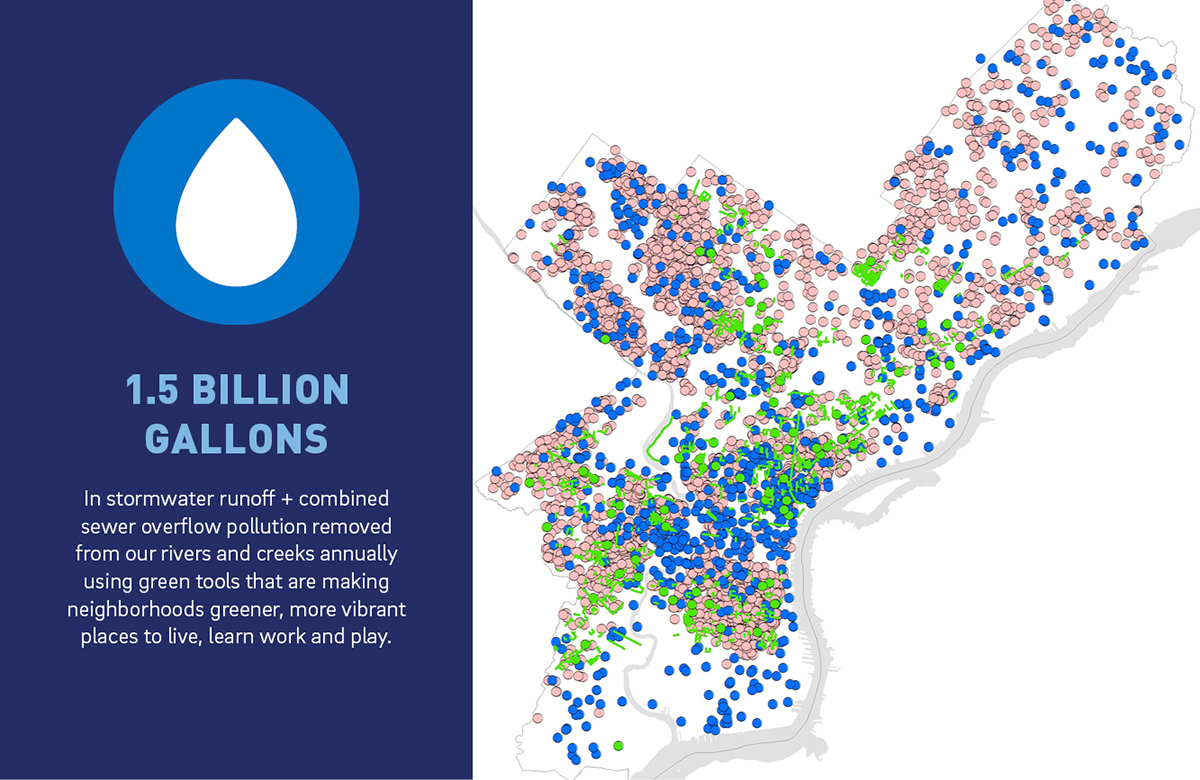
Join us for the unveiling of the city's first porous green street1 today on the 800 block of Percy Street. This green infrastructure project is a collaboration between the Philadelphia Water Department and the Streets Department; the porous asphalt allows stormwater runoff to infiltrate the surface and is stored in a stone bed until it can be absorbed by the soil. Preventing runoff from entering our sewers during rainstorms alleviates combined sewer overflows and protects the health and quality of our rivers. It's all part of PWD's Green City, Clean Waters plan to manage stormwater with green infrastructure, an approach that maximizes economic and environmental benefits to all parts of the city.
Skeptical about porous paving? Come out and toss a water balloon; you'll see firsthand how the paving soaks up water.
Date: Tuesday, May 10
Time: 1:30-2:30 p.m.
Location: 800 block of Percy Street (between Christian and Catharine, between 9th and 10th)
Those attending the unveiling include Mayor Michael Nutter, PWD Commissioner Howard Neukrug, Streets Department Commissioner Clarena
Tolson, Deputy Mayor of Transportation and Utilities Rina Cutler, and Councilman Frank DiCicco. Check back here tomorrow for photos of the event and the complete, green and porous Percy Street!
1 You might be wondering: Is this really Philadelphia's first porous street? What about cobblestone? Traditional cobblestone such as the type that is found in Philadelphia is not porous, as the stones are mainly set in impervious mortar.



